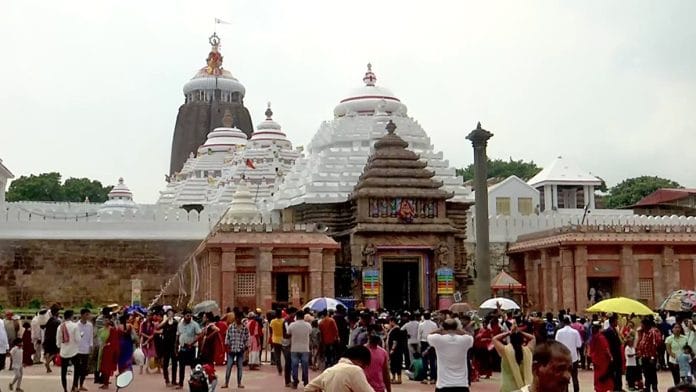The treasure room, or Ratna Bhandar, of Puri’s Jagannath temple was finally opened after 39 years on Sunday for an inventory of the artefacts, which were last valued in 1978. The temple complex was empty, save for priests bearing the great keys, government-appointed officials ready to record the valuables, and Rapid Action Force commandos prepared to contain any law-and-order situation.
Outside the temple, lakhs gathered to witness the vault’s reopening. At exactly 1:28 pm—the ‘auspicious’ time chosen in consultation with astrologers—the room was opened. The treasury’s inner chamber reportedly contains 180 items of jewellery; plates of gold, pearls, diamonds, and corals; and 146 silver articles.
The newly-formed BJP government made good on its electoral promise of reopening the vault within the first 100 days of coming to power, consolidating its toehold in Odisha and deepening its footprint in the hearts of Puri devotees.
A five-hour labour
A 12-member team led by the temple’s chief administrator, Arabinda Padhee, and retired Orissa High Court judge, Justice Biswanath Rath, entered the outer chamber that led them from one door to another. The team took stock of the valuables and shifted them to a temporary store room. By the time they reached the seventh door that would take them into the inner chamber, five hours had passed. The chaos outside must have fallen away.
The duplicate keys to the inner chamber—the original were reported missing in 2018 and have never been found—would not work.
“We broke the locks and entered. We have just visualised the position there. Since we were there for five hours and did not have time, we thought it was appropriate to reseal it using new locks,” Justice Rath, also the chairman of the inspection committee, told reporters.
Inside the room, they saw five large almirahs, several trunks, and some objects lying on the floor.
But daylight had drained away and the team couldn’t assess much, so the inventory of the wealth was put off for “five-six days”. The team took two sets of videos for record-keeping.
Even this cursory information evokes the description of Vault A at the Padmanabhaswamy temple in Kerala, which was opened in 2011. Lawyer M Balagovindan, an eyewitness, described the findings to The New Yorker: “As I looked into the darkened vault, what I saw looked like stars glittering in a night sky when there is no moon. Diamonds and gems were sparkling, reflecting what little light there was. Much of the wealth had originally been stored in wooden boxes, but, with time, the boxes had cracked and turned to dust. And so the gems and gold were just sitting in piles on the dusty floor.”
Since 2011, five more vaults of the Padmanabhaswamy temple have been opened. The inventory revealed treasures worth Rs 1.8 lakh crore while the unopened chamber is estimated to house a treasure worth Rs 83 lakh crore. For a sense of scale, the Vatican is believed to be worth Rs 2.5 lakh crore.
Also read: When did large Hindu temples come into being? Not before 500 AD
A metaphysical treasure
As they trickle into the national consciousness, these findings remind us how little we know of India’s ancient treasures. We have grown up reading that India was once known as the golden sparrow, a sone ki chidiya, until it was lost to invaders. For centuries, India was plundered, gradually losing its legacy because we did not fight hard enough to save it.
With each passing decade, the vision of that priceless past fades a little more and the reality of everyday battles of survival becomes sharper.
This is precisely why the scale of such treasures is staggering. Apart from the physical riches—hundreds of kilos of gold, gemstones the size of pigeon eggs, lizard-green emeralds, and diamonds that sparkle like stars—the treasure is also metaphysical.
It captivates our collective imagination because it embodies something more elusive. It reminds us that our grasp of our own stories is tenuous and unreliable. These small piles of great wealth remind us of what we do not know about ourselves.
Written history would have us believe about our weakness, our inability to mount a strong defence, and our foibles in allowing petty rivalries to divide us—but those texts were written by the victors.
Now, confronted with wealth that rivals the economies of some modern countries, hidden in vaults beneath our gods, and saved from concerted looting, we are compelled to ask: Were those conquered and defeated in history entirely defenceless? Or were some of them playing a longer game?
Priyanka Narain, former Global Religion reporter at the BBC and Business of Religion reporter at Mint is an award-winning journalist. Her latest book, ‘The Somnath Cipher’, is a fictional treasure hunt set in the modern-day Somnath Temple.
(Edited by Prasanna Bachchhav)






